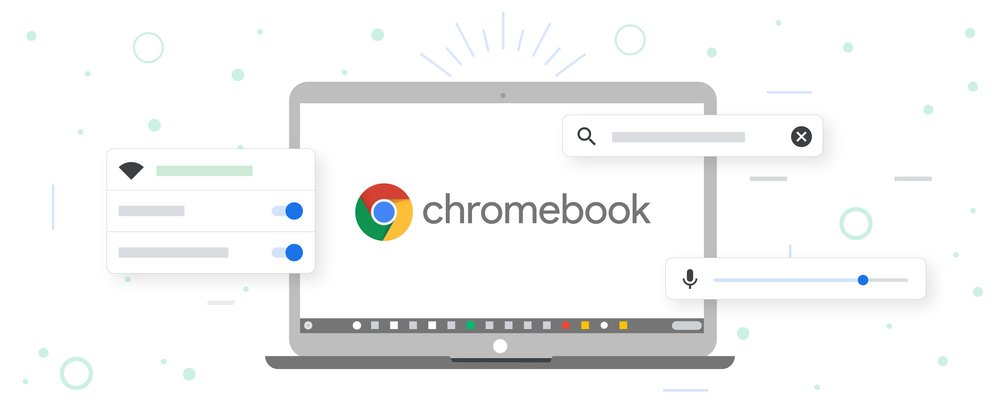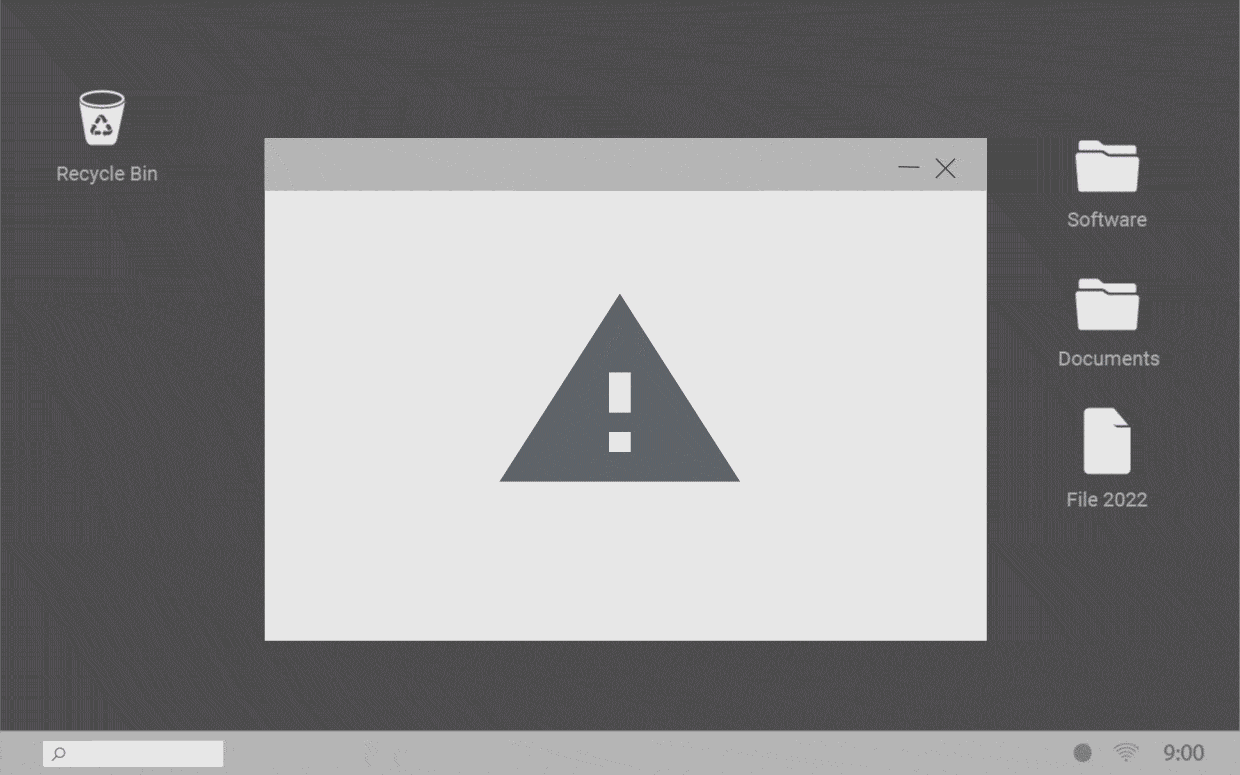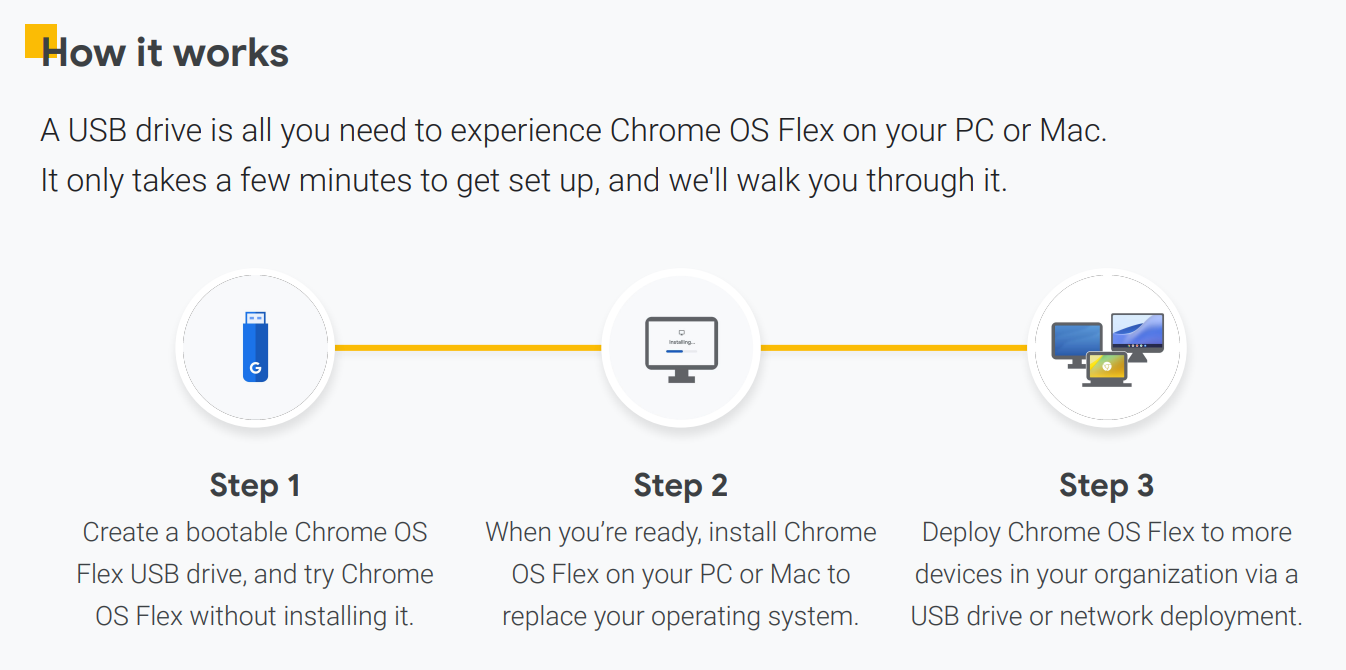You may not be aware of it, but it’s been possible to turn your old Windows or Mac computer into a Chromebook for quite some time already thanks to third-party businesses, with the best-known among them probably Neverware with its CloudReady Chromium OS fork. Google acquired this company back in 2020, and while CloudReady still exists, it was clear that the California company had bigger plans for it. Fast forward to today, and we’re finally ready to look at the spiritual successor to CloudReady. Google has just announced Chrome OS Flex, its own solution for turning any computer into a Chromebook for free.
Google is very open about Neverware’s legacy in its announcement. The company says that Chrome OS Flex is built by the same team that created CloudReady, now working hard on integrating its benefits into the new variant of Chrome OS. There should be many advantages coming with this switch. For one, this will be an official Chrome OS product, not one created from its open-source base Chromium OS. This will allow Google to release updates much faster, and it will be based on the same code as the OS running on proper Chromebooks, complete with the same release cadence as regular Chrome OS. CloudReady has always lagged behind in that regard, and only ever shipped every other release of Chromium OS by default.
Chrome, Google Assistant, and cross-device features such as Phone Hub or the upcoming Pixel phone screen streaming capabilities are coming to the Flex experience, though notably, Android and Linux support is much more limited. While you will be able to stream your Pixel phone's screen to Chrome OS Flex devices in the future, Android apps themselves don't run on it, just like they never did on CloudReady. And just like on CloudReady, Linux virtualization support is limited. Only a few devices with the required virtualization capabilities are able to run the Linux container, a list of which you can find over at Google's support pages.
Chrome OS Flex is supposed to be easily installable, requiring nothing but a big enough USB drive that is used to create a bootable Chrome OS Flex image. Using that stick, it’s possible to try out Chrome OS on your current hardware, and if you’re happy with the experience, you can then install the operating system on your device. Enterprise users can also utilize network deployment.
Chrome OS Flex is supposed to breathe in new life into old hardware, with Google saying that it can run efficiently on devices as old as 13 years, but just like CloudReady, there will be a number of officially supported devices that will have end-of-life dates, as all Chromebooks have them. Given that Chrome OS Flex is made with older hardware in mind, the window should be much more generous than for regular Chromebooks.
Google has a paid upgrade on offer for business users, but other than that, Chrome OS Flex is completely free to use. The so-called Chrome Enterprise Upgrade unlocks some business-focused tools and deployment methods. It will allow administrators to manage and secure Chrome OS Flex devices right alongside Chromebooks in their consoles, simplifying and unifying the whole device management process.
With this strategy, Google appears to be hoping to convert even more people — and most importantly, businesses — to Chrome OS. While Chrome OS Flex is pitched as a viable solution for anyone who wants to extend the life of their older machines, it’s more than likely that enterprises will become interested in switching over to ready-made Chromebooks in the long term if they like what they get out of Chrome OS Flex and if they’re interested in Android and Linux support. And if they’d rather stick with their old machines, Google can still earn some revenue thanks to its Enterprise services for management and distribution, all while making some of that sweet advertising cash from regular folks using Chrome OS Flex.
If you want to give Chrome OS Flex a try yourself, Google has instructions on that readily available on this page. There, you’ll also find details on which devices work best with Chrome OS Flex at the moment and which known issues still exist. For now, Chrome OS Flex is only available on the Chrome OS developer channel, the under-development, most unstable version of the OS.
You can also still use CloudReady if you prefer a more stable experience. The current release is based on Chrome OS 94 and can be downloaded over at Neverware’s website. Once Chrome OS Flex becomes available in stable over the coming months, CloudReady customers will be upgraded to it for free. There’s no word on free users, but if Chrome OS Flex comes as part of an over-the-air upgrade, there would be no reason why they should be left out. Either way, given the cloud-first nature of Chrome OS, a manual switch might not be too much of a hassle.
Updated with more details regarding Android and Linux container availability on Chrome OS Flex.



